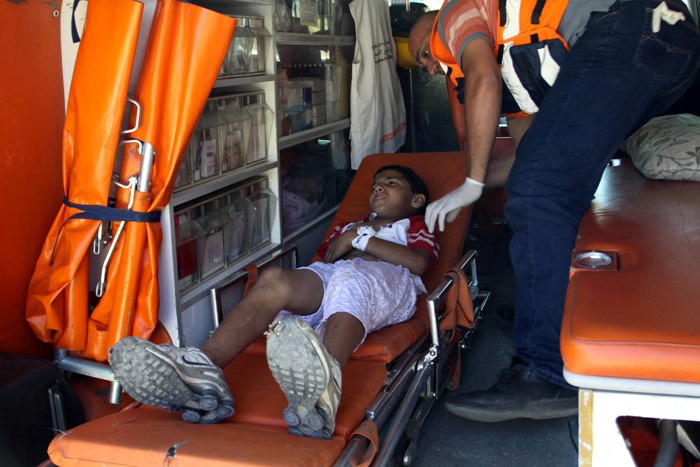Tag: Settlers
-
Help bring Jalaal home
September 11, 2012 | International Solidarity Movement, West Bank What would you do if 30 men armed with sticks and guns stormed into your home beat your little brothers and began beating your mother and ripping her clothes? On August 28 this happened to sixteen year old Jalaal Daraghmah. He did his best to protect…
-
Settlers destroy 18 olive trees Burin
By Alex Marley 11 September 2012 | International Solidarity Movement, West Bank Eighteen Palestinian-owned olive trees were destroyed by Israeli settlers in the village of Burin, near Nablus, when the illegal settlers attacked the Palestinian land on Tuesday 4 September 2012. Burin, located in the northern West Bank, comes under frequent attack from the illegal…
-
Hebron man walks down street for first time in years
By Ben 10 September 2012 | International Solidarity Movement, West Bank On Sunday 9th September, Hashem Azzeh walked down the street outside his house for the first time in years. Hashem lives with his artist wife Nasreen and their four children (14, 9, 4 and 2 years old) on a hillside in the Tel Rumeida…


